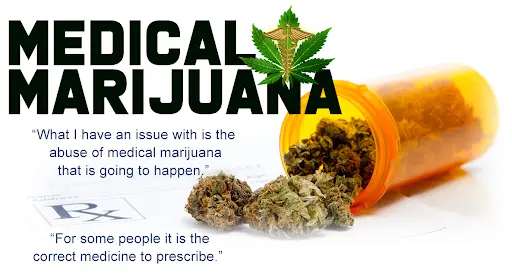Introduction
Medical marijuana uses cannabis plants or chemicals in it to treat illnesses or conditions. It’s fundamentally the same item as recreational marijuana, but it’s taken for therapeutic purposes. The pot plant contains more than 100 diverse chemicals called cannabinoids. Each one contains a diverse impact on the body. Delta-9-tetrahydrocannabinol (THC) and cannabidiol (CBD) are the most chemicals utilized in pharmaceuticals. THC moreover produces the “high” individuals feel when they smoke cannabis or eat nourishments containing it.
What is Medical Marijuana?
Medical Marijuana is the therapeutic utilize of the Cannabis sativa or Cannabis indica plant to soothe side effects of, or treat illnesses and conditions. The Cannabis plant was utilized therapeutically for centuries around the world until the early 1900s.
Table of Contents
ToggleWhat is Medical Marijuana used for?
Medical marijuana can offer assistance to treat a number of conditions including:
- Alzheimer’s disease
- Appetite loss
- Cancer
- Crohn’s disease
- Diseases affecting the immune system like HIV/AIDS or Different Sclerosis (MS)
- Eating clutters such as anorexia
- Epilepsy
- Glaucoma
- Mental wellbeing conditions like schizophrenia and
- posttraumatic stress disorder (PTSD)
- Multiple sclerosis
- Muscle spasms
- Nausea
- Pain
- Seizures
- Wasting disorder (cachexia)
The most prominent sum of evidence for the restorative impacts of cannabis-related to its capacity to reduce persistent torment, sickness, and spewing due to chemotherapy, and spasticity [tight or solid muscles]
How does it help?
Cannabinoids — the dynamic chemicals in therapeutic marijuana — are comparative to chemicals the body makes that are included in craving, memory, development, and pain. The research proposes cannabinoids might:
- Reduce anxiety
- Reduce aggravation and diminish pain
- Control queasiness and spewing caused by cancer chemotherapy
- Kill cancer cells and slow tumor growth
- Relax tight muscles in individuals with MS
- Stimulate craving and improve weight gain in individuals with cancer and AIDS
Has the FDA approved medical marijuana?
The cannabidiol Epidiolex was endorsed in 2018 for treating seizures related with two uncommon and serious shapes of epilepsy, Lennox-Gastaut disorder and Dravet disorder. In expansion, the FDA has affirmed two man-made cannabinoid medications — dronabinol (Marinol, Syndros) and nabilone (Cesamet) — to treat sickness and spewing from chemotherapy. The cannabidiol Epidiolex was endorsed in 2018 for treating seizures related with two uncommon and extreme shapes of epilepsy, Lennox-Gastaut disorder and Dravet syndrome.
Intake of Medical Marijuana
To take therapeutic cannabis, you can:
- Smoke it
- Inhale it through a gadget called a vaporizer that turns it into a mist
- Eat it — for example, in a brownie or lollipop
- Apply it to your skin in a salve, splash, oil, or cream
- Place a number of drops of fluid beneath your tongue
How you take it is up to you. Each strategy works in an unexpected way in your body. You will feel the impacts of medical marijuana rapidly when you smoke or vaporize the medical marijuana and if you eat, it will take more longer than altogether. It can take 1 to 2 hours to encounter the impacts from consumable products.”
Side Effects of Medical Marijuana
Side impacts that have been reported include:
- Bloodshot eyes
- Depression
- Dizziness
- Fast heartbeat
- Hallucinations
- Low blood pressure
The sedate can moreover influence judgment and coordination, which may lead to mischances and wounds. When utilized amid the teenage years when the brain is still developing, pot might influence IQ and mental function. Because pot contains a few of the same chemicals found in tobacco, there have been concerns that smoking may harm the lungs. The impacts of inhaled cannabis on lung well-being aren’t clear, but there are a few prove it might increment the chance for bronchitis and other lung issues.
Marijuana effects on Lungs
Studies have appeared that cannabis smoke contains cancer-causing hydrocarbons and is an aggravation to the lungs. Cannabis users tend to breathe in more significantly and hold their breath longer than tobacco smokers do, which further increments lung exposure to carcinogenic smoke.”.
After smoking pot, the bronchial passage unwinds and gets to be broadened. Pot smoke contains numerous of the same cancer-causing chemicals found in cigarette smoke, frequently in more prominent amounts (Mehmedic).
Both sorts of smoke contain cancer-causing nitrosamines, polycyclic fragrant hydrocarbons, vinyl chlorides, and phenol (Martinasek).
People who smoke pot regularly have the same respiratory issues as cigarette smokers. These people may have daily hack and mucus, side effects of chronic bronchitis, shortness of breath, chest snugness, wheezing and more frequent chest colds. They are too at greater hazard of getting lung contaminations like pneumonia, as detailed by the NIDA.
Is medical marijuana “addictive?”
Most research proposes a really moo chance of compulsion and exceptionally low poisonous quality of restorative pot when taken as recommended in low restorative measurements. There’s concern about psychological dependence in heavy clients and whether this constitutes marijuana abuse. A few researches have recommended CBD oil may be valuable in treatment for cannabis addiction or pot abuse.

